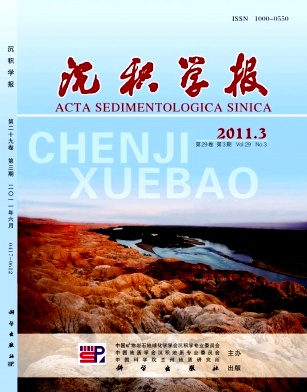Oxygen Isotope of Brachiopods from the Pennsylvanian Coral Reef Area in South Guizhou Province and Its Significance
- Received Date: 1900-01-01
- Rev Recd Date: 1900-01-01
- Publish Date: 2011-06-10
-
Key words:
- Key words brachiopod shell /
- oxygen and carbon isotopes /
- trace element /
- Pennsylvanian /
- South Guizhou
Abstract: Phylloid algal reefs are dominant in Pennsylvanian all over the world and well exposed in the south Guizhou, China. While the metazoan framework reefs develop well in this area, especially the presence of a rarely largescale Fomitchevella coral reef, which is constructed mostly by big phacelloid Fomitchevella. As a result, South Guizhou becomes a unique case of the Carboniferous reef. Stratigraphically, South Guizhou reefs belong to the Maping Formation (the Triticites Zone, Gzhelian, uppermost Pennsylvanian). The depositional environment of the Maping Formation is at shallow marine carbonate platform margin. Furthermore, the faunal association recorded point to a paleogeographical position in a lowlatitude close to the equatorial realm in south China during the Pennsylvanian time. Thus, it can be inferred that the growth environment of Fomitchevella reefs is in a relative warm water, fitting the development of coral reefs.
Surely we can use fossil brachiopod shells to attain part of environmental information with respect to the development of Pennsylvanian Fomitchevella coral reef in South Guizhou. These fossil brachiopod samples were collected from the uppermost Pennsylvanian Fomitchevella coral reef deposits in South Guizhou of China and the preservation state of shells was tested using conventional selection criteria such as cathodoluminescence, microscopy, trace element analysis and Xray diffraction analysis. Despite the selection of wellpreserved shells using the conventional evaluation criteria, there are still concerns as to whether the selected brachiopod shells do indeed contain original seawater signals. Analyzed insitu by Laser AblationInductively Coupled PlasmaMass Spectrometry(LAICPMS), Fe, Mn, Ni, Sr, Na, Zn, Cr and Cd distribute symmetrically in shell transects of the fossil brachiopods
Striatifera striata and Enteletoides shuichengensis. Symmetry of the trace element distribution pattern derived from shell growth bands and is considered an intrinsic and original ontogenetic property of the brachiopod shell chemistry. Ni, Fe, Mn, Na and Sr distribution is symmetrical in the wellpreserved shells of the Pennsylvanian brachiopods Striatifera striata and Enteletoides shuichengensis, indicating that the selected shell by the conventional methods has preserved its original seawater signal for nearly 2.9 Ma. Pennsylvanian largescale Fomitchevella coral reef associated with brachiopods Striatifera striata and Enteletoides shuichengensis in the Triticites Zone, South Guizhou Province. Xray diffraction analysis indicates that the chemical composition of Striatifera striata shell is pure lowMg calcite and is free of any signs of diagenesis. Low Fe and Ni contents occurring in Enteletoides shuichengensis shell are indicative of slightly diagenetic alteration since recrystallization under reducing conditions tends to enrich shell calcite in Fe and Ni. Profiles of Ni, Fe, Mn, Na and Sr contents from hyperplasia symmetrically across the transverse section are nearly dissymmetrical in both brachiopod shells. Therefore, it supports a good preservation of both shells, and the diagenetic effect to fossil Enteletoides shuichengensis shell could be ignored. The carbon and oxygen isotopic composition of wellpreserved brachiopod shells were investigated in order to get some information with respect to the depositional environment of largesized Fomitchevella coral reef. The δ18OPDB values of Striatifera striata and Enteletoides shuichengensisis shells are -3.249‰ and -3.385‰ respectively, translated it into seasurface water temperatures of 21.60℃ to 31.18℃. These two brachiopod shells are high in δ13CPDB values of 4.784‰ and 4.782‰ respectively. The δ13CPDB values are slightly higher in comparison to values of Gzhelian brachiopods (+4.4±1.1‰) from the Russian platform. Z value was 135 point to “normal” marine values assumed for the Pennsylvanian coral reef seawater.
| Citation: | YANG Lili. Oxygen Isotope of Brachiopods from the Pennsylvanian Coral Reef Area in South Guizhou Province and Its Significance[J]. Acta Sedimentologica Sinica, 2011, 29(3): 458-464. |






 DownLoad:
DownLoad: